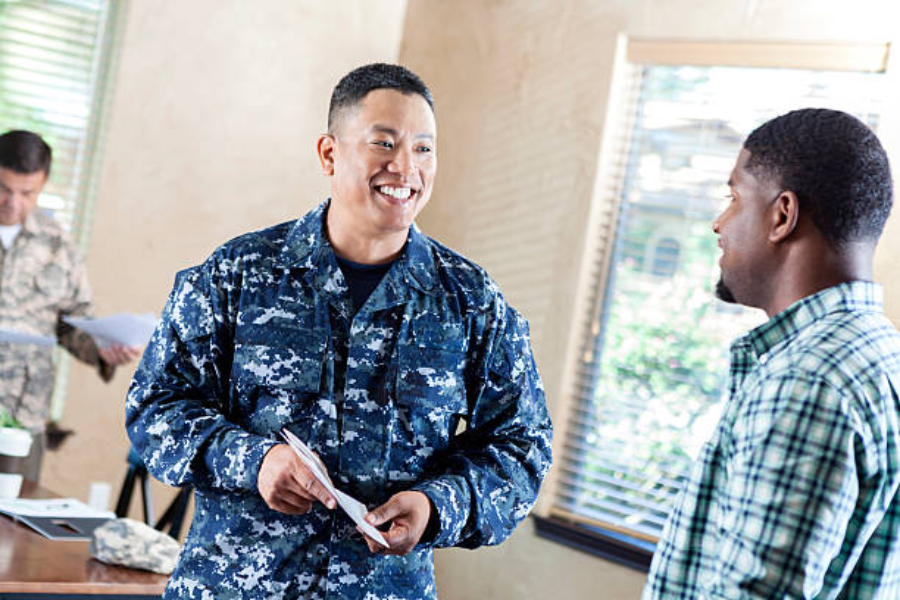The US Navy’s SEAL Teams, an elite special operations force, are renowned for their unparalleled capabilities in maritime and unconventional warfare. Their responsibilities encompass a broad range of high-stakes missions, each requiring a unique blend of precision, adaptability, and expertise. To understand the SEAL Teams’ key responsibilities, it’s useful to explore the roles of Navy officers who oversee and support their operations. This examination highlights how different US Navy Officer Ranks contribute to the success of SEAL missions.
Strategic Leadership: The Admiral’s Oversight
At the strategic level, the Admiral plays a crucial role in shaping the overarching objectives and policies that guide the SEAL Teams. Admirals are responsible for setting the strategic direction of naval special warfare and ensuring that SEAL Teams are aligned with national security goals. Their responsibilities include coordinating with other branches of the military and international partners to address complex threats and challenges.
For instance, an Admiral might be involved in approving high-level operations that require SEAL Teams, such as counter-terrorism missions or high-value target eliminations. By providing strategic oversight, Admirals ensure that SEAL Teams are effectively integrated into broader military strategies and that their operations are aligned with national defense priorities.
Operational Command: The Vice Admiral’s Role
The Vice Admiral is one of the US Navy Officer Ranks that has a more direct role in operational command, overseeing the execution of special operations and the deployment of SEAL Teams. Vice Admirals manage the resources and logistics necessary for SEAL operations, ensuring that the teams are equipped, trained, and prepared for their missions. Their role is critical in translating strategic objectives into actionable plans.
For example, a Vice Admiral might oversee the deployment of SEAL Teams for a mission involving the liberation of hostages or the dismantling of a high-value target. By coordinating with other military units and agencies, Vice Admirals ensure that SEAL Teams are effectively supported and that their operations are conducted smoothly and successfully.
Tactical Leadership: The Rear Admiral’s Contribution
Rear Admirals, both upper and lower, are instrumental in the tactical execution of SEAL operations. They often command naval special warfare units or serve as key advisors within larger operational frameworks. Their responsibilities include overseeing the training and readiness of SEAL Teams and ensuring that they are prepared for a variety of missions.
A Rear Admiral might be responsible for overseeing a special operations command that coordinates multiple SEAL Teams. They ensure that these teams are equipped with the latest technology and intelligence, and that they receive the necessary support to carry out their missions effectively. The Rear Admiral’s role is crucial in maintaining the operational readiness and effectiveness of SEAL Teams.
Key Responsibilities of the SEAL Teams
Here are some of the roles that SEAL teams play:
1. Direct Action Missions
One of the primary responsibilities of SEAL Teams is conducting direct action missions. These operations often involve precision raids on high-value targets, such as terrorist leaders or enemy infrastructure. SEAL Teams are trained to perform these missions with a high degree of accuracy and speed, often operating behind enemy lines or in hostile environments.
The success of these missions is supported by the strategic and operational guidance of Admirals and Vice Admirals. They ensure that SEAL Teams have the necessary resources and intelligence to execute their objectives effectively. The Rear Admiral’s role in coordinating and overseeing these operations ensures that the teams are well-prepared and that their missions are aligned with broader military goals.
2. Counter-Terrorism and Hostage Rescue
SEAL Teams are also renowned for their expertise in counter-terrorism and hostage rescue operations. These missions require a combination of tactical skill, psychological acumen, and rapid response capabilities. SEAL Teams are trained to handle high-stakes situations where the safety of hostages and the prevention of terrorist attacks are paramount.
The role of the Vice Admiral is crucial in planning and coordinating these sensitive operations. By providing operational oversight and ensuring that SEAL Teams are equipped with the latest technology and intelligence, Vice Admirals help to enhance the effectiveness of these critical missions. Rear Admirals also play a key role in ensuring that the teams are properly trained and prepared for such high-pressure scenarios.
3. Maritime Operations and Reconnaissance
Maritime operations and reconnaissance are another key responsibility of SEAL Teams. They conduct covert reconnaissance missions to gather intelligence and assess potential threats in maritime environments. These operations often involve inserting SEAL Teams into enemy territory or hostile waters to gather valuable information.
The strategic guidance of Admirals and the operational command of Vice Admirals are essential in supporting these maritime missions. Rear Admirals ensure that SEAL Teams have the necessary support and resources to conduct their operations effectively. Their role in overseeing the coordination of these missions ensures that SEAL Teams are able to perform their duties with precision and effectiveness.
Conclusion
The key responsibilities of US Navy Officer Ranks are diverse and demanding, encompassing direct action missions, counter-terrorism, hostage rescue, and maritime operations. The success of these high-stakes missions relies on the strategic, operational, and tactical support provided by various Navy officers. Admirals, Vice Admirals, and Rear Admirals play crucial roles in guiding, coordinating, and overseeing SEAL operations, ensuring that these elite teams are prepared to meet the challenges of modern warfare and maintain global security. Through their combined efforts, the SEAL Teams continue to uphold their reputation as one of the most effective and versatile special operations forces in the world.
Stay tuned for the latest news and updates on Creative Released



